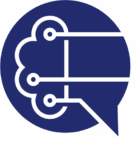Please be aware that the following content was generated using Artificial Intelligence (AI).
In today’s fast-paced corporate environment, leaders in learning and development are continually seeking innovative ways to enhance employee performance, engagement, and overall organisational effectiveness. As AI coaching emerges as a transformative tool, L&D leaders face the challenge of demonstrating its value. Understanding the return on investment (ROI) of AI coaching is essential for securing buy-in from stakeholders and integrating this technology into broader organisational development strategies.
To navigate this, let’s explore some tangible ways to measure the impact of AI coaching within your organisation.
1. Establish clear objectives
Before embarking on the journey of implementing AI coaching, it’s crucial to define what success looks like for your organisation. Set clear, measurable objectives that relate to the key areas you wish to improve. Whether it’s employee engagement, performance metrics, or leadership development, these goals will provide the framework for your impact measurement.
Begin by identifying specific outcomes you want to achieve through AI coaching. For example, you might aim to increase employee satisfaction scores by a specific percentage, reduce onboarding time for new employees, or enhance the skills of future leaders. By establishing these targets, you’ll create a baseline against which you can measure the success of your coaching programme.
2. Track engagement levels
One of the most immediate ways to assess the effectiveness of AI coaching is by tracking engagement levels of your employees. Analytics can provide insights into how often employees are using the AI coaching platform, the duration of sessions, and the specific areas being discussed. Tools that monitor engagement metrics can offer a glance into whether employees are finding value in the coaching interactions.
Moreover, closely observe the usage patterns in relation to the objectives set. If your goal is to foster a coaching culture, finding high engagement levels would indicate that employees are not only participating but also valuing the insights gained from AI coaching.
3. Assess changes in performance metrics
To measure AI coaching ROI effectively, correlating coaching interactions with performance metrics is vital. This could include looking at changes in productivity levels, quality of work, or even sales figures—depending on your organisational context. Establish a methodology to compare pre-coaching performance metrics with those collected during and after the coaching period.
For instance, if your goal was to enhance performance within specific teams or departments, compare the KPIs (Key Performance Indicators) of those teams before and after the implementation of AI coaching. Where possible, utilise control groups to clarify how the AI coaching intervention has specifically contributed to observed changes.
4. Solicit feedback and conduct surveys
While quantitative data is essential for establishing AI coaching effectiveness, qualitative feedback from employees is invaluable too. Engage your employees through surveys or focus groups to ask about their experiences with the AI coaching platform. Were they able to achieve their personal or professional goals? Did they find the coaching conversation relevant and impactful?
You can design your feedback mechanisms to align with the predefined objectives. For example, if a prominent goal is to support leadership development, ask participants how AI coaching helped them in their leadership roles. Measuring sentiment and satisfaction will not only provide insights into the effectiveness of the coaching but also illuminate areas for improvement.
5. Measure development of specific skills
AI coaching is highly adaptable and can be customised to foster specific competencies relevant to your organisational goals. Determine which skills are critical for your workforce and design an assessment to measure the progress of those skills over time. This may take the form of feedback from peers, managers, or self-assessment surveys reflecting on the development of those skills during and post-coaching.
Tracking the growth of key competencies will illustrate the value of AI coaching not only to individuals but also to the organisation as a whole. If the coaching conversations are designed around the strategic goals of your organisation, you will be able to see a clear link between coaching and competency development.
6. Evaluate retention rates and employee turnover
Employee retention is another key metric for measuring the ROI of AI coaching. High turnover rates can be costly, both financially and in terms of organisational culture. Monitor if there are changes in retention rates following the implementation of AI coaching; this data could suggest a positive impact on employee satisfaction and engagement.
Moreover, conduct exit interviews to gather insights from departing employees regarding their experiences with AI coaching. Did it contribute to their decision to stay or leave? Such qualitative information can be insightful in refining your coaching strategy.
7. Cost-benefit analysis
Finally, a classic yet effective approach to measuring ROI is conducting a cost-benefit analysis of the AI coaching programme. Compare the costs associated with implementing and running the AI coaching platform to the financial gains derived from improved employee performance, productivity, and retention.
For example, if your organisation has seen a significant increase in productivity that is attributable to AI coaching, quantify that benefit against the investment made into the coaching platform. This analysis will highlight the financial justification for adopting AI coaching in your organisation.
To summarise, measuring the ROI of AI coaching involves a combination of clear objective establishment, meticulous tracking of engagement and performance, soliciting employee feedback, assessing skill development, monitoring retention rates, and conducting thorough cost-benefit analyses. By utilising these strategies, L&D leaders can build a compelling case for the integration of AI coaching into their development offerings, demonstrating not just the value of financial investment but also its crucial contribution to a thriving coaching culture.
Ready to explore how AI coaching can impact your organisation? Get your ROI calculator for AI coaching and consider a demonstration of our platform at AIcoach.chat. Let us help you unlock the potential of your workforce.




